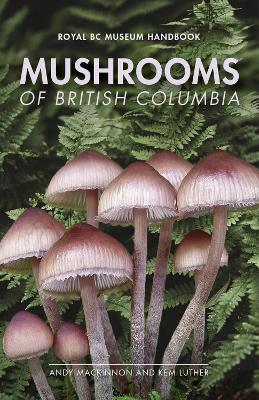Reviewed by annieb123 on
Mushrooms of British Columbia is a well illustrated field guide to mycology and the specimens to be found in British Columbia specifically. Due out 3rd Sept. 2021 from The Royal BC Museum, it's 504 pages and will be available in paperback format.
Drs. Andy MacKinnon and Kem Luther are both professionals with backgrounds in mycology and science. Despite being academics, they manage to write accessibly and engagingly about the subject in a way that spans both layman level interest and the obvious necessity for science based and factual positive species identification for safety reasons.The book is laid out logically and the information is easy to locate.
There seems to be a happy resurgence in interest in mycology and nature lately which might be one of the very very few positives from the social constraints the pandemic has thrust upon us. Turned out of the possibilities for social interaction, (and turfed out of workout studios and gyms), many have turned to the great outdoors for solace, grounding, mental and physical health and connection. Birding groups, nature walks (alone or video guided), foraging groups online and similar outlets have enjoyed a strong renewal of interest in the last year.
This is a very good, very well illustrated, no-nonsense guide to BC and that part of the Pacific Northwest. The introductory chapters give a good overview over the life cycle of fungi, their role in ecology, info about foraging and other general information and resources for further learning.
The following (majority portion) of the book breaks down the identification process by separating mushrooms by their physical attributes: veined, gilled, if gilled, then by spore print (pale, pink, brown, dark spored), boletes, toothed, clubbed, corals, polypores, jellies, puffballs, bird's nests, and so on and so forth.
Each entry includes the common and botanical nomenclature, size, description, habit (location, fruiting identifiers, etc), edibility (or not), and species with similar or potentially confusing appearances. The photographs are abundant and in colour.
Very well done, very high quality book for mushroom/fungus enthusiasts. This would also make a superlative selection for library acquisition, and use in more formal instruction such as school nature walks, foraging groups, mycology groups, in addition to the home library.
Five stars.
Disclosure: I received an ARC at no cost from the author/publisher for review purposes.
Reading updates
- Started reading
- 18 April, 2021: Finished reading
- 18 April, 2021: Reviewed
